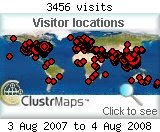By Cielito Habito
Philippine Daily Inquirer
First Posted 17:59:00 03/09/2008
A FORMER government statistician wrote me a note describing our economy's recent growth in the above terms (rather than minus the "u"), in light of the recently released report that poverty had worsened between 2003 and 2006.
The latest official poverty statistics, based on the Family Income and Expenditures Survey (FIES) of the National Statistics Office (NSO), affirms what many observers had been lamenting for some time.
Not only has the supposed brisk growth of our economy in recent years not been felt by the majority of our people; worse, it had actually pushed an additional 700,000 families, or almost four million Filipinos, into poverty!
Ruthless growth
Philippine Daily Inquirer
First Posted 17:59:00 03/09/2008
A FORMER government statistician wrote me a note describing our economy's recent growth in the above terms (rather than minus the "u"), in light of the recently released report that poverty had worsened between 2003 and 2006.
The latest official poverty statistics, based on the Family Income and Expenditures Survey (FIES) of the National Statistics Office (NSO), affirms what many observers had been lamenting for some time.
Not only has the supposed brisk growth of our economy in recent years not been felt by the majority of our people; worse, it had actually pushed an additional 700,000 families, or almost four million Filipinos, into poverty!
Ruthless growth
This outcome where poverty actually worsens with economic growth is the worst form of what has come to be labeled in the development literature as "ruthless growth."
Closely related to this is the phenomenon of jobless growth, where GDP growth is not accompanied by commensurate growth in employment.
The data speak for themselves: Jobs grew by only 11.9 percent within the six year period 2001-2007, when real GDP grew more than three times faster by 38.4 percent.
Note that in the same period, the number of working-age Filipinos grew much faster, too (15 percent), not counting those who had already gone overseas.
It should be no surprise, then, how poverty can rise in the face of the economy's recent growth.
These dismal poverty numbers give rise to two types of questions. The first type has to do with the veracity of the statistics, particularly those on economic growth. The second type concerns the reasons for the worsening poverty situation.
Inconsistencies
In his latest analyses on our economic data, former Neda Chief Philip Medalla points to stark inconsistencies in the official statistics.
He notes in particular that GNP/GDP statistics say our economy has attained the "highest economic growth rates ever," achieving "higher average economic growth rates under the Arroyo administration than those attained under Presidents Aquino, Ramos and Estrada."
On the other hand, data from the FIES, a survey taken every three years across more than 41,000 households, paint exactly the opposite picture: Family income and expenditures grew the slowest in the Arroyo years, i.e., in 2000-2003 and 2003-2006.
Administration apologists insist that the GNP/GDP accounts and the FIES do not measure exactly the same things. Still, Medalla points out that from 1988 to 2000, GDP growth and FIES statistics painted the same economic picture; now they actually contradict each other.
And this is just one among several contradictions in the statistics he notes to have emerged only in the Arroyo years. "Given all the guesstimates that enter the GDP statistics, I'm inclined to believe the FIES," he notes. "In other words, the economy is not doing as well as government propagandists would like us to believe." And the worsening poverty picture in 2003-2006 seems to lend credence to his suspicion.
Real income losses
Why has poverty worsened? What has pushed close to four million additional Filipinos into poverty?
The reason, clearly, was that personal/family incomes failed to catch up with the rising cost of living. The FIES data show average family income rising by 16.3 percent in 2003-2006, but cost of living had far outstripped this, with a growth of 22.3 percent in the same period.
Albay Gov. Joey Salceda, in his presentations to explain his proposed economic stimulus cum social rebalancing program, itemizes the sources of the real income loss suffered especially by middle and lower income groups.
These are: Higher petroleum prices, which took P118 billion away from family incomes; the E-VAT, which took away another P76 billion; the increase in power tariffs charged by National Power Corp., which took P56 billion; the peso appreciation, which took away P39 billion, and removal of the cross-subsidy on residential power by commercial/industrial establishments, which took away P34 billion from household incomes.
All told, these account for the bulk of the estimated P461 billion drop in household incomes tracked by the FIES between 2003 and 2006.
Not just from OFWs
Even the much-touted remittances do not really go to the poor, according to emerging results of a study by the Asian Development Bank shared in a public briefing last week.
This affirms the clarification that former Commission on Filipinos Overseas Executive Director Joe Molano has repeatedly been making, i.e., that the billions of dollars in remittances coming in from abroad are not just coming from contract workers, but also from long-term Filipino migrants abroad who are likely to be more affluent.
That a substantial part is evidently coming from this group is supported by the data showing that half of all remittances come from the United States.
These are the remittances propelling brisk sales of condominiums, rather than stimulating the rural economy where most of the poor are.
It seems the government has attained yet another first, this time an unflattering one: For the first time, we see poverty rise even as the economy grows.
We badly need to turn this "puro-poor" growth into a truly pro-poor one.













0 comments:
Post a Comment